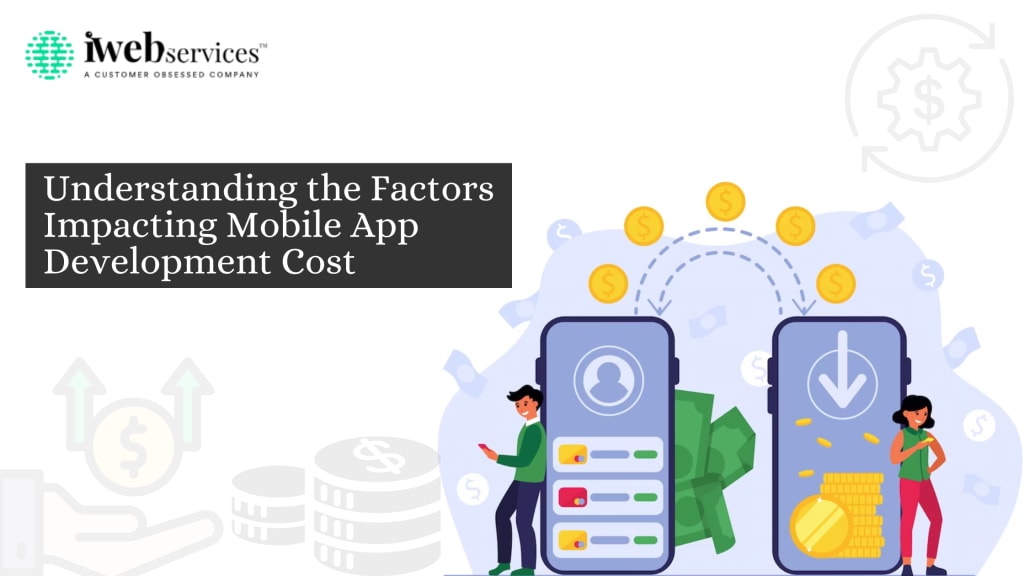Understanding the Factors Impacting Mobile App Development Cost
Top Mobile App Development Company in India

Mobile apps have become an integral part of our daily lives, catering to various needs and enhancing user experiences across the globe. From on-demand service to entertainment and communication to marketing, mobile apps have revolutionized the way we interact with technology.
However, creating a successful mobile app requires careful planning, design, and development, and one critical aspect that can significantly influence the outcome is the cost involved. The cost of mobile app development can vary widely based on numerous factors that come into play during the entire development process.
In this article, we will explore the key factors that impact mobile app development costs and provide insights into how understanding these factors can help you budget and plan your app development project more effectively.
1. Complexity of App Features and Functionality
While availing of the mobile app development services for custom development, the complexity of app features and functionality is a primary determinant of development costs. Apps with basic features, such as simple content display or limited user interactions, are generally less expensive to develop.
On the other hand, apps with advanced features like real-time messaging, complex algorithms, or augmented reality demand more extensive development efforts and, consequently, higher costs.
2. Platform Selection
Deciding on the platform for which the app will be developed is another significant factor. Developing a native app for a single platform (e.g., iOS or Android) usually requires more effort and cost compared to building a cross-platform app that runs on multiple platforms.
Cross-platform development offers cost savings by reusing code, but it may not always deliver the same level of performance and user experience as native apps. Rely on a reliable mobile app development company to give you the right advice on platform selection.
3. User Interface (UI) and User Experience (UX) Design
The app's user interface (UI) and user experience (UX) play a vital role in its success. A well-designed, intuitive, and visually appealing UI/UX can significantly enhance user engagement and retention. However, creating such designs often involves additional design iterations and testing, which can add to the development costs.
4. Development Team Experience and Location
The expertise and experience of the development team are crucial factors influencing costs. Hiring highly skilled and experienced developers may come at a higher hourly rate, but their efficiency and proficiency can lead to faster development times and fewer revisions. Additionally, the location of the development team can impact costs. Development rates can vary significantly between different regions and countries.
5. Backend Infrastructure and APIs
In, the mobile app development services, backend infrastructure and integration of third-party APIs (Application Programming Interfaces) are essential considerations for app functionality and data storage. Building a robust backend system that can handle the app's requirements may require significant investment, depending on the app's complexity and the number of APIs integrated.
6. Security and Compliance Requirements
In mobile app development, security is of the utmost importance. Apps handling sensitive data or performing financial transactions need to meet strict security standards and comply with relevant regulations. Ensuring a high level of security and compliance may incur additional development and testing costs.
7. Testing and Quality Assurance
Thorough testing and quality assurance are vital for delivering a reliable and bug-free app. Comprehensive testing across various devices and operating systems may prolong the development process but is essential for a successful launch. Allocating a sufficient budget for testing ensures that issues are identified and resolved before the app reaches users.
8. Post-Launch Maintenance and Updates
After launching the app, ongoing maintenance and updates are necessary to keep the app functional, secure, and compatible with new devices and OS versions. Budgeting for post-launch maintenance ensures the app remains relevant and efficient over time.
Conclusion
Mobile app development costs are influenced by a multitude of factors, and understanding these factors is crucial for effective budgeting and planning. The complexity of app features, platform selection, UI/UX design, mobile app design company expertise, backend infrastructure, security and compliance, testing, and post-launch maintenance all contribute
About the Creator
Lilly Gracia
I am Lilly Gracia, a software engineer at iWebServices. It is one of the most reliable web and mobile app development firms, catering to tens of thousands of clients worldwide.






Comments
There are no comments for this story
Be the first to respond and start the conversation.